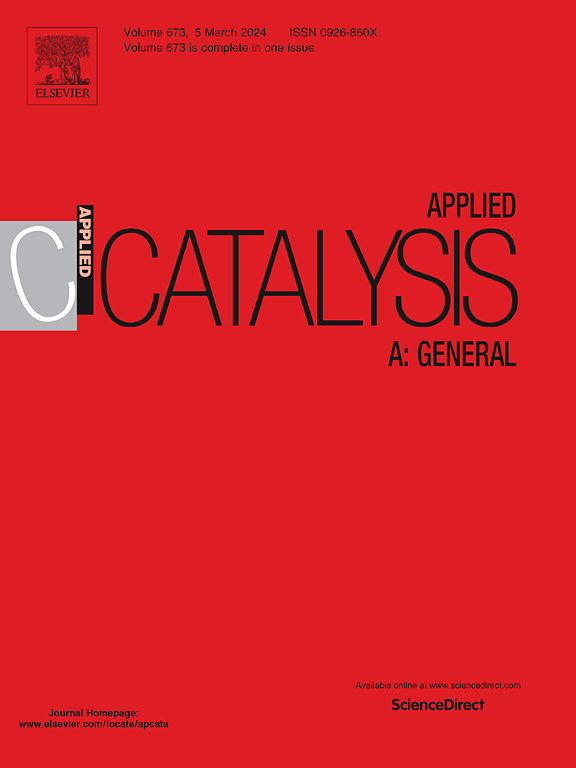在碎片状g-C3N4@ZnIn2S4复合材料中内置的电场促进超氧自由基的产生,用于高选择性光催化甲苯氧化
IF 4.8
2区 化学
Q2 CHEMISTRY, PHYSICAL
引用次数: 0
摘要
碳氢化合物中的sp3碳氢键是有机化合物中普遍存在的化学键。由于其固有的惰性,在温和条件下的直接化学转化受到很大限制。在本研究中,我们设计并合成了一种具有增强可见光响应的z型碎片化g-C3N4@ZnIn2S4异质结光催化剂,在温和的条件下实现了惰性sp3 C-H键的氧化。在甲苯的光催化选择性氧化过程中,合成的催化剂对甲苯的转化率为10.2 mmol g−1 h−1,对苯甲醛的选择性高达80% %。控制实验和表征分析表明,z型异质结的形成促进了内部电场的建立,从而提高了电荷分离和迁移效率。这促进了超氧自由基(·O2-)的生成,从而实现了甲苯的高效转化。这项研究为z型异质结的应用和C-H键的激活提供了新的见解。本文章由计算机程序翻译,如有差异,请以英文原文为准。
The built-in electric field in fragmented g-C3N4@ZnIn2S4 composite boosts the generation of superoxide radicals for highly selective photocatalytic toluene oxidation
The sp3 C-H bond in hydrocarbons is a ubiquitous chemical bond found in organic compounds. Due to its inherent inertness, direct chemical conversion under mild conditions is significantly restricted. In this study, we have designed and synthesized a Z-type fragmented g-C3N4@ZnIn2S4 heterojunction photocatalyst with enhanced visible light response, achieving the oxidation of inert sp3 C-H bonds under mild conditions. During the photocatalytic selective oxidation of toluene, the synthesized catalyst demonstrated a 10.2 mmol g−1 h−1 conversion rate of toluene, with a selectivity for benzaldehyde products reaching up to 80 %. Control experiments and characterization analyses revealed that the formation of the Z-type heterojunction facilitated the establishment of an internal electric field, thereby enhancing charge separation and migration efficiency. This promoted the generation of superoxide radicals (·O2-), enabling efficient transformation of toluene. This research offers new insights into the application of Z-type heterojunctions and the activation of C-H bonds.
求助全文
通过发布文献求助,成功后即可免费获取论文全文。
去求助
来源期刊

Applied Catalysis A: General
化学-环境科学
CiteScore
9.00
自引率
5.50%
发文量
415
审稿时长
24 days
期刊介绍:
Applied Catalysis A: General publishes original papers on all aspects of catalysis of basic and practical interest to chemical scientists in both industrial and academic fields, with an emphasis onnew understanding of catalysts and catalytic reactions, new catalytic materials, new techniques, and new processes, especially those that have potential practical implications.
Papers that report results of a thorough study or optimization of systems or processes that are well understood, widely studied, or minor variations of known ones are discouraged. Authors should include statements in a separate section "Justification for Publication" of how the manuscript fits the scope of the journal in the cover letter to the editors. Submissions without such justification will be rejected without review.
 求助内容:
求助内容: 应助结果提醒方式:
应助结果提醒方式:


